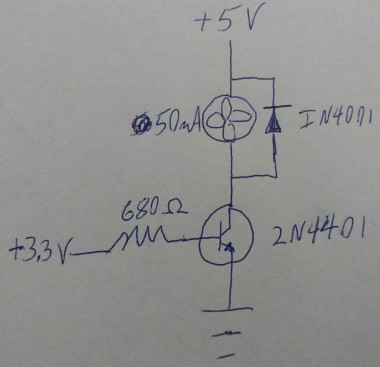Small fan switch sanity check.
Circuit is for controlling the fan on a Raspberry Pi, just on/off according to temp, no PWM. Not sure about the diode as it has a .7V drop and it’s a tiny brushless DC motor. No markings on the fan so I measured the current with a multimeter when hooking it up to a USB charger. Circuit was adapted from here using what I have on hand.
Suggestions? Any advice is greatly appreciated!
*EDIT: Confirmed, this circuit works on a Raspberry Pi 4. Base was wired to GPIO 17 and manually tested using commands:
raspi-gpio set 17 op dh
raspi-gpio set 17 op dl
I didn’t use a breadboard, just hack-n-slash with the wires coming out of the fan, the leads on the thru hole components, a jumper connected to gpio 17 as a socket for the base/resistor lead, and heat shrink tubing for insulation. Folded it up as I closed the housing. Case combo including heatsinks and fan here.


Add comment